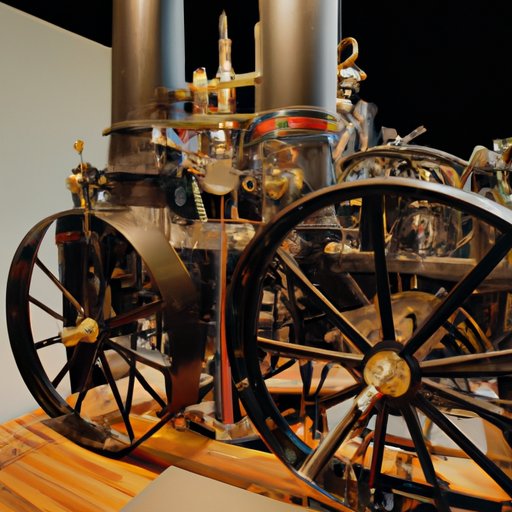An Overview of the Invention of the Steam Engine
The steam engine is a device that converts heat energy into mechanical energy through the use of pressurized steam. It has been an integral part of industrialization since its invention in the early 18th century, powering factories, machines, transportation, and much more. But when was the first steam engine invented? Let’s take a closer look at the history of this incredible invention.

Examining the Initial Designs of the Steam Engine
The invention of the steam engine is often credited to Thomas Newcomen, who created the atmospheric steam engine in 1712. However, the concept of the steam engine had already been explored by other inventors before him. The earliest design of a steam engine can be traced back to 1698, when Thomas Savery patented the first steam pump.
Savery’s invention was used to pump water out of coal mines, but it was not very efficient. It required a constant source of fuel and relied on open-air condensation to create a vacuum, which wasted a lot of energy. This led to the development of a new type of steam engine, one that could be powered without relying on open-air condensation.
In 1712, Thomas Newcomen designed and built the world’s first practical steam engine. His invention, known as the atmospheric steam engine, was able to generate a continuous power source from a single cylinder. This was a major breakthrough, as it meant that the steam engine could now be used to power large machines and factories.

A Timeline of the Development of the Steam Engine
The invention of the steam engine marked the beginning of a new era for industrialization. From the early 17th century to the late 18th century, the steam engine was gradually improved upon and developed into a more efficient energy source. In 1769, James Watt invented the separate condenser, which significantly increased the efficiency of the steam engine.
The Industrial Revolution in the 19th century saw a rapid development of the steam engine. Improvements were made to its design, making it even more powerful and efficient. By the end of the century, steam engines had become the main source of power for factories and machines. They were also being used to power ships, locomotives, and other forms of transportation.
The Impact of the Steam Engine on Industrialization
The invention of the steam engine revolutionized industrialization. Its ability to generate a continuous power source allowed factories and machines to operate at unprecedented levels of efficiency. This, in turn, increased production and allowed for the mass production of goods at a much faster rate.
“The steam engine enabled us to move from a society based primarily on manual labor, to one driven by mechanization,” says Dr. Robert Smith, professor of history at the University of California. “It allowed us to produce more goods with fewer people and in less time, leading to a period of unprecedented economic growth.”

Thomas Newcomen and the First Steam Engine
Thomas Newcomen was the inventor of the first successful steam engine. He was born in 1663 in Dartmouth, England, and began working as a blacksmith at an early age. In 1712, he designed and built the world’s first practical steam engine, the atmospheric steam engine.
Newcomen’s invention was a simple yet ingenious design. It used a piston to draw in cold air, which was then heated by steam. This caused the air to expand, creating a vacuum and forcing the piston to move. This motion was then used to power a variety of machines and tools.
The Adoption of the Steam Engine in Transportation
The introduction of the steam engine had a major impact on transportation. Railways began using steam-powered locomotives to transport passengers and goods around the country. Ships also adopted steam engines, allowing them to travel at much faster speeds than ever before.
In 1807, the first successful steamboat was launched in America. It was called the Clermont and was designed by Robert Fulton. This marked the beginning of a new era of transportation, as steamboats quickly became the most popular way to travel on rivers and lakes.

Exploring the Legacy of the Steam Engine
The invention of the steam engine changed the course of history. Its impact can still be seen today in modern technology and industry. The steam engine laid the groundwork for further research and innovation, leading to the development of other forms of power such as electricity and nuclear energy.
“The steam engine is the foundation of modern industry,” says Dr. Smith. “Without it, we wouldn’t have the technologies and machines we rely on today. It’s a testament to the ingenuity of human beings and our ability to innovate and create.”
The invention of the steam engine was a major milestone in the history of industrialization. Its legacy lives on in modern technology and industry, and its impact can still be felt today. The steam engine has truly changed the world, and its story is one of innovation and progress.
(Note: Is this article not meeting your expectations? Do you have knowledge or insights to share? Unlock new opportunities and expand your reach by joining our authors team. Click Registration to join us and share your expertise with our readers.)
